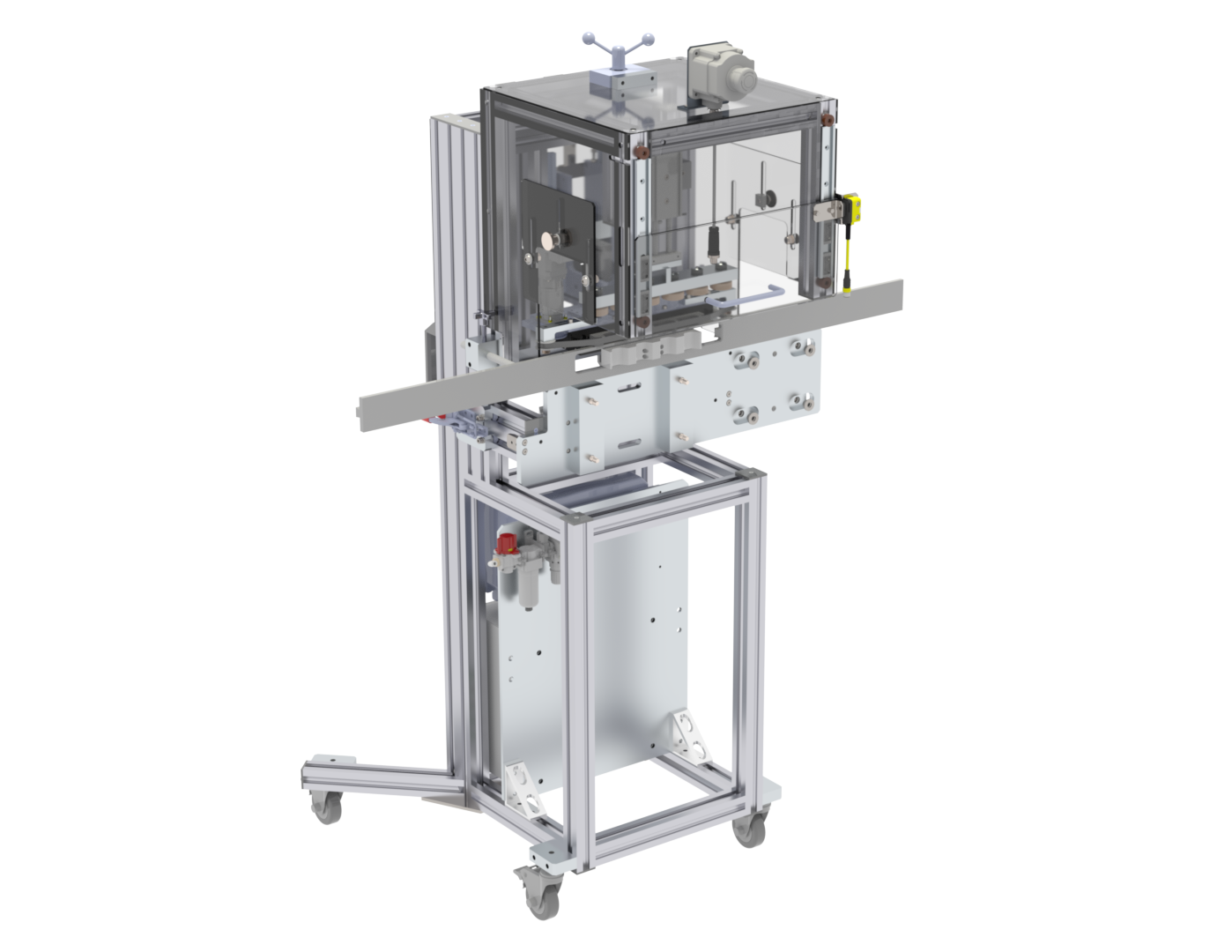← Previous
Back to Case Studies

Summary
Re:Build DAPR successfully solved improper threading of caps onto plastic spray-bottles in a client’s automated bottling line. The approach included the retrofitting of an existing manufacturing line with a custom belt-drive solution. Location: Confidential Product: Retrofitting a Manufacturing Line: Customized Belt-Drive Solution for Spray-Bottle Cap Threading Issues Industry: Consumer goods Timeframe: 4 MonthsBackground
Re:Build DAPR was tasked with retrofitting a new cap thread starter onto our client’s existing manufacturing line to address cap orientation issues resulting in cross threading and spills during the torquing process. The client specialized in packaging & bottling services. Before our involvement, their manufacturing line was functioning, but issues were arising with the ‘capping machine’. Uniform torque applied to the caps of the bottles resulted in cross-threading, causing spills. These spills led to significant downtime of their entire production line resulting in delayed delivery schedules. The purpose of our machine was to resolve these issues to eliminate waste, reduce downtime & improve quality to hit the client’s delivery schedules.Challenges and Solutions
- The biggest challenge of this project stemmed from the cost limitations set by the customer. This meant that a typical independent thread starting device for each bottle cap would be difficult to implement to stay under budget within the allocated project schedule. With this challenge in mind, DAPR designed a custom belt-drive to initiate the cap threading of four bottles at a time. This four-up process was selected through detailed timing studies to maintain the throughput of the existing manufacturing line. Independent compliance was built into each bottle position to simulate independent control so that each bottle cap did not affect the others during the belt drive operations. Maintaining cap orientation was crucial to the success of the project. The old ‘capper’ worked well when caps were oriented appropriately. However, if caps were slightly misplaced at an angle, it would often fail, causing misalignment of the threads and cross threading when torqued down. Prior to DAPR’s engagement, even if caps were carefully placed in the proper orientation at the start, by the time they reached the capping device, the bottles had been jostled against each other enough to knock the caps out of alignment. To address this issue, DAPR captured the caps with custom guides, and then used torque starting techniques to ensure orientation while threading caps on the bottles. Utilizing the new machine, the client was able to improve quality assurance, reduce man hours without the need for a checker, and increase the uptime of the machine without spills occurring. The culmination of these improvements therefore increased production.
- DAPR had to integrate automation equipment within the constraints of the existing equipment with a customized automated robotic solution. Limitations such as dimensional requirements of the existing machine footprint, precise timing & spacing of the customer’s products & the existing capping process added complex challenges. This required a high level of “out-of-the-box” creativity coupled with solid engineering best practices to produce a quality solution. The entire machine was custom-built to fit within our client’s existing manufacturing line, as there was not enough space, nor the capital from the client to install a completely new system.
- To prove the feasibility of the innovative belt-drive solution, significant prototype testing was performed. The design was created to be easily adjustable so that the ideal settings could be dialed in. The prototype testing phase was crucial in ensuring that the design would work as intended to optimize the machine’s performance.
Successes
As is true with most innovative first-time prototype machines, the belt drive mechanism initially failed approximately 2% of the time upon startup, which was still too high for our client & unacceptable in our own minds. Because of our robust risk analysis process, adequate flexibility & adjustability was built into the design. Therefore, by tweaking the settings & adding minor improvements during integration, the machine was successful in working for our client. Our machine eliminated the cross-threading issue in the downstream torquing machine that resulted in spills and significant downtime on our client’s machine. This reduced man hours by eliminating the need for an additional operator to watch the line for any misplaced caps, improved quality assurance, and increased the uptime of the machine. All this led to successful production volume & schedule targets being hit by our customer.
Our client was very pleased with the outcome of the project. They were able to catch up on their existing backlog with the addition of this equipment in their manufacturing space. The success of this project has led to further opportunities to work with this client on future projects. We look forward to continuing to provide innovative and customized solutions to meet their needs.
← Previous
Back to Case Studies
